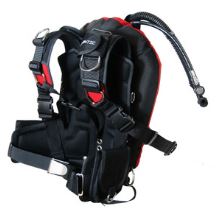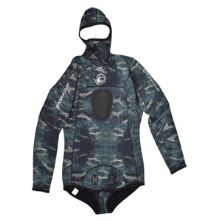18th Oct 2023
Mastering Buoyancy Control for a Better Dive Experience
Scuba diving offers a mesmerizing glimpse into the underwater world, allowing divers to explore marine life and discover hidden treasures beneath the surface. To truly enjoy this experience, mastering buoyancy control is paramount. We'll delve into the techniques, equipment, and knowledge needed to achieve optimal buoyancy for a safer, more enjoyable dive.
Introduction to Buoyancy Control
Importance in Scuba Diving
Buoyancy control is the ability to maintain a desired depth while submerged in water. It is a fundamental skill for scuba divers, as it affects not only their safety but also the environment they explore. Proper buoyancy control conserves energy, reduces air consumption, and minimizes the impact on delicate marine ecosystems.
Understanding the Basics
Archimedes' Principle
At the core of buoyancy control lies Archimedes' Principle, which states that an object immersed in a fluid experiences an upward force equal to the weight of the displaced fluid. This principle forms the foundation for understanding positive, negative, and neutral buoyancy.
Positive, Negative, and Neutral Buoyancy
Positive buoyancy occurs when an object is lighter than the water it displaces, causing it to rise. Negative buoyancy, on the other hand, happens when an object is heavier, causing it to sink. Achieving neutral buoyancy, where an object hovers in the water column, is the goal for scuba divers.
Equipment and Gear
Buoyancy Compensator (BCD)
The BCD is a vital piece of equipment that allows divers to control their buoyancy. It consists of an inflatable bladder worn like a vest, which can be filled with air to increase buoyancy or released to decrease it.

Weights and Weight Systems
Weights are used to counteract the buoyancy of the diver and their equipment. Proper weight distribution is crucial for achieving neutral buoyancy.
Wetsuits and Drysuits
These not only provide thermal protection but also affect buoyancy. Knowing how your chosen suit impacts your buoyancy is essential for control.

Techniques for Achieving Neutral Buoyancy
1.Proper Weighting
Finding the right amount of weight is a personalized process. It's important to conduct a buoyancy check at the beginning of each dive to ensure you're properly weighted.
2.Breathing Control
Controlling your breathing is a powerful tool for buoyancy. Deep, slow breaths help maintain stability, while quick, shallow breaths can lead to erratic buoyancy.
3.Trim and Posture
Maintaining a horizontal position in the water minimizes resistance and aids in achieving neutral buoyancy. Proper trim and posture are key factors.
Advanced Buoyancy Control Techniques
1.Fine-tuning with BCD Inflation and Deflation
Mastering the nuances of inflating and deflating the BCD allows for precise control over buoyancy.
2.Body Positioning
Small adjustments in body position can significantly impact buoyancy. Divers should experiment with subtle movements to find the optimal position.
3.Buoyancy Drills and Exercises
Regular practice through drills and exercises refines buoyancy control skills, making them second nature.
Common Buoyancy Problems and Solutions
1.Overweighting
Carrying excess weight can lead to difficulty achieving neutral buoyancy. Regularly reassessing your weighting is crucial.
2.Underweighting
Insufficient weight can lead to constant effort to stay submerged. It's essential to find the right balance.
3.Buoyancy Drift
Environmental factors, such as currents, can affect buoyancy. Adjustments may be needed throughout the dive.
Safety Tips for Buoyancy Control
1.Monitoring Air Supply
Maintaining awareness of your air supply is essential for a safe dive. Buoyancy control affects your breathing rate.
2.Equalizing Ear Pressure
Proper buoyancy control can facilitate easier equalization of ear pressure, reducing discomfort and potential injury.
Benefits of Mastering Buoyancy Control
1.Conservation Efforts
By achieving precise buoyancy control, divers can reduce their impact on delicate underwater environments, contributing to conservation efforts.
2.Enhanced Dive Experience
Mastering buoyancy allows divers to move effortlessly through the water, resulting in a more enjoyable and immersive experience.
Practice and Training for Buoyancy Mastery
1.Buoyancy Workshops and Courses
Enrolling in buoyancy-focused workshops or courses can provide valuable guidance and practice opportunities.
2.Solo Buoyancy Practice
Dedicating time to solo buoyancy practice in controlled conditions helps build confidence and proficiency.
Wrapping Up
In the realm of scuba diving, mastering buoyancy control is a transformative skill that enhances safety, conserves energy, and enriches the underwater experience. Through understanding the principles, utilizing proper equipment, and honing techniques, divers can achieve a state of weightless harmony in the aquatic world.
